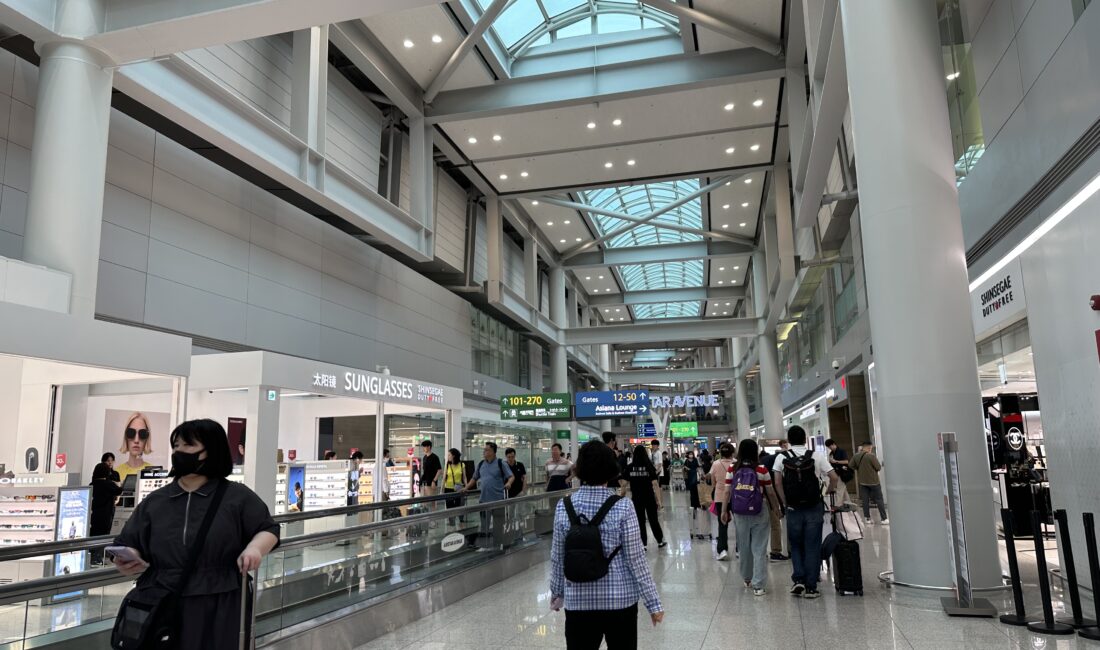Airports today have moved beyond being just infrastructures where aviation operations are carried out; they have become integrated centers of commerce and experience. The steady growth of passenger traffic and competition in air transport has driven airports to diversify their non-aeronautical revenue streams. Duty-free shops, passenger lounges, advertising spaces, parking, accommodation, and digital services have become critical elements for both financial sustainability and passenger satisfaction.
Global Outlook and the Pandemic Effect
According to the Airport Council International (ACI) World Economics Report, the share of non-aeronautical revenues in total airport revenues was 40.2% in 2019. During the pandemic, the dramatic decline in passenger traffic severely affected retail and food & beverage revenues.
Reports from 2023 show this rate has dropped to 36.7%. Although passenger traffic has nearly returned to pre-pandemic levels, non-aeronautical revenue streams have not yet fully recovered. ACI’s ANARA projections estimate these revenues could return to 2019 levels by 2026.
Knowing the Passenger and Data Management
Passenger profiling and data analytics are becoming increasingly strategic in airport management:
-
Passenger Journey Analytics: Terminal flow, waiting times, and purchasing behavior.
-
Biometric Systems: Automation in boarding, security, and check-in increases both operational efficiency and customer satisfaction. A pilot project at Istanbul Airport shortened boarding time by 30%, extending the time passengers spend in commercial areas.
-
IATA Global Passenger Survey: 75% of passengers say they are open to using biometric verification if it provides security and faster processing.
Effective data management is not only essential for operational efficiency but also forms the basis for commercial planning and concession management processes.
The Commercial Impact of Airport Design
Terminal architecture, signage systems, passenger flow management, and ambiance design directly influence passenger psychology and spending behavior:
-
Natural light, open spaces, intuitive signage → Reduce stress and increase spending tendency.
-
Quiet zones, clean facilities, air quality management → Strengthen passenger trust.
-
Commercial zoning: Well-placed retail areas boost impulse purchases.
Thus, terminal design is not just an architectural choice but an integral component of commercial revenue strategy.
The Evolution of the Passenger Lounge Concept
Passenger lounge operations are gaining increasing prominence within non-aeronautical revenue streams:
-
Personalized F&B services: Healthy menus, vegan/vegetarian options, and local gastronomy experiences.
-
Cultural integration: Art exhibitions, music performances, and regional features.
-
Digitalization: Mobile reservations, digital concierge apps, personalized recommendations.
-
Hybrid spaces: Blending business meetings with social interaction.
-
Children’s play areas: Examples from Singapore Changi and Doha Hamad.
-
Sleep & rest areas: Sleep pods at Helsinki Vantaa, quiet rooms in Dubai lounges.
Today, lounge experience influences not only waiting times but also airline choice and even hub airport preference. Passengers may choose a connecting airport based on lounge quality.
Türkiye’s Contribution: Global Benchmark Practices
Türkiye has become a global reference point not only with mega-hub investments but also with its passenger services.
-
Primeclass Passenger Services
-
Passport Card
-
Primeclass Lounges
These projects stand out as pioneering examples of excellence in passenger services, inspiring airports worldwide.
The Future: Aeropolis Vision
The global trend is to reimagine airports with the Aeropolis concept:
-
Building hotels and accommodation complexes, MICE (Meetings, Incentives, Conferences, Exhibitions) areas, retail clusters, and entertainment centers around the airport.
-
Transforming the airport from a transit point into a final destination in itself.
By embracing this vision, Türkiye can position itself not only as a transfer hub but also as a global leader in passenger experience.
Non-aeronautical revenues are an indispensable pillar of airport financing. While the post-pandemic recovery continues, understanding passengers and managing data effectively will be the key to driving these revenues back up.
From my experience in the sector, I can say this:
When passengers feel valued, find comfort, and have their needs anticipated, both satisfaction and revenues rise naturally.
“The new path to revenue runs through the passenger’s heart.”



